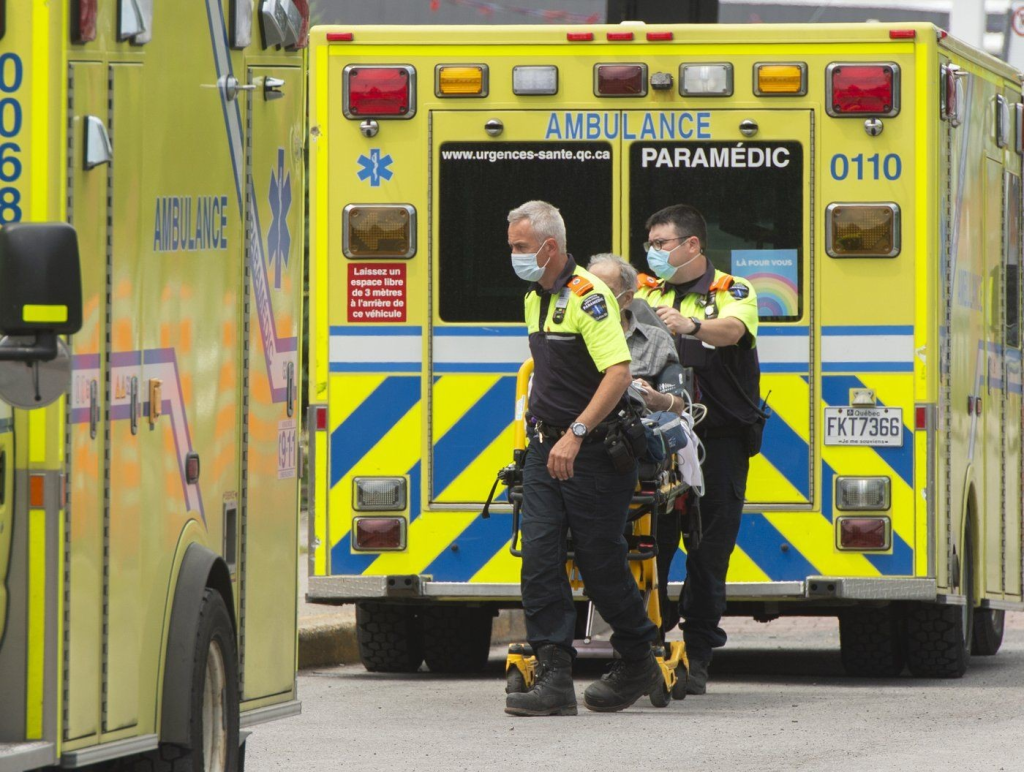
Urgences-santé and Airudi, a Quebec-based PME specializing in the design of AI solutions, announced on Thursday a partnership powered by artificial intelligence that aims to optimize pre-hospital care.
“The objective is to equip the Urgences-santé team with intelligent dashboards that will give them access to real-time data and help them make the best decisions,” Airudi co-founder and VP of operations Amanda Arciero explained to The Canadian Press in a preview.
Urgences-santé provides paramedical care to 2.5 million people in Montreal and Laval every year. The company receives around a thousand calls a day, representing some 36 per cent of ambulance requests in Quebec.
This demand is expected to jump by 10 per cent in Montreal and Laval, putting additional pressure on the workload of paramedics.
Urgences-santé believes that its partnership with Airudi will enable it to better predict demand, which should lead to better planning and management of the paramedic workforce.
To this end, the MODUS platform will analyze not only historical data, but also real-time information and other factors that can have an impact on demand, such as local demographics, weather and road conditions.
A sophisticated machine learning algorithm will integrate these various elements to develop a predictive model of call volume, optimizing workforce planning and proposing optimal deployment scenarios to meet the expected level of service, it was explained in a press release.
But first and foremost, these will be predictions, Amanda Arciero stressed.
“The comparison we sometimes use is the weather, so the user has to have a tolerance threshold,” she said. The weather forecast isn’t always perfect, but it’s still a good indicator, and you can tell whether you’re bringing an umbrella tomorrow or not. So it’s really the same dynamic that we want to put in place through the use of our products.”
With this solution, Urgences-santé is seeking to equip itself with a decision-making aid that will “ensure an immediate or quasi-immediate response to the population” in case of need, said its Executive Assistant General Manager, Mathieu Campbell.
“Urgences-santé is present at the time (the event) occurs or based on trends over the past few years,” he recalled. “But here, what we’re trying to do is plan ahead to match supply and demand.”
“Urgences-santé obviously has the capacity to respond to urgent calls,” said Campbell, “but it’s hard to know in the next hour or in the next few days if we’re going to have a marked increase in calls.”
“It’s clear that if an ice storm hits, we’ll be able to know about it and then structure ourselves,” he said. “But beyond that, there are other factors, like demographics, that really influence response capacity, and that’s where we think this solution will enable us to get ahead of the game (…) and optimize our response.”
Current employees are experienced people who are able, based on data such as current conditions or trends over the past few years, to “manage their workforce well,” but they also rely heavily on what Campbell amiably refers to as “their guesstimate.”
“But we’re in a social context where there will be a lot of retirements, so a lot of loss of knowledge,” he added. “There are also trends that will change and that we hadn’t seen before.”
Arciero and Campbell agree that artificial intelligence is “not at all” a replacement for human expertise, but rather a complement to it.
“Current employees have access to a wealth of information, but they have to process and analyze it, and there’s a limit to what they can do in terms of day-to-day management,” says Campbell.
“The dashboard is going to feed into decision-making,” said Campbell. It doesn’t replace the human being, it supports him in his operations. The solution will give you a complete picture so you can make the right decision.”
“One of the goals is to strike the right balance between the number of ambulances available to respond to emergencies that can’t wait, and to meet other priorities,” he added.
This partnership is arousing the curiosity of several other ambulance services, including those in Alberta and Nova Scotia. We could also consider adapting the solution to the hospital environment, for example, to anticipate emergency room traffic, said Arciero.
“This could be conceivable under a number of conditions, including data availability,” she explained. “It’s often a challenge in some organizations to be mature in terms of data availability. But yes, certainly, it’s something that could be transposed to the healthcare sector.”
MODUS will be rolled out progressively over the coming months, with a full rollout planned for the second quarter of 2026.
–This report by La Presse Canadienne was translated by CityNews